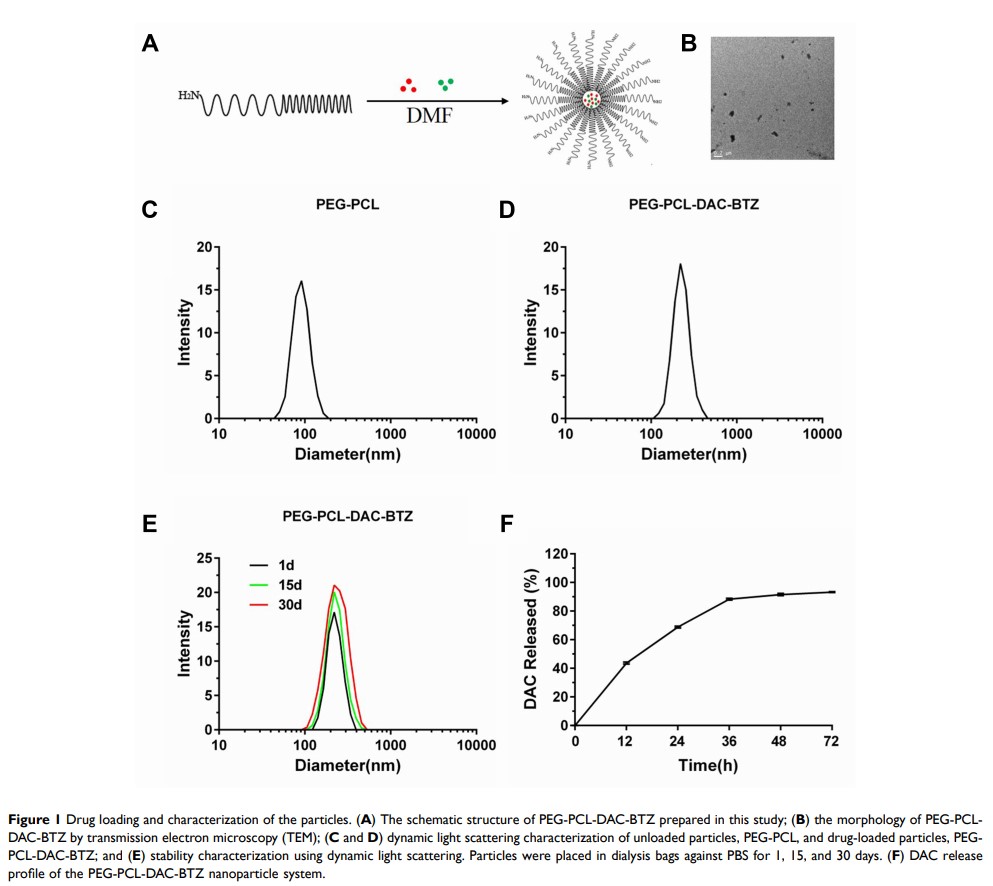9 7 8 1 6
论文已发表
注册即可获取德孚的最新动态
IF 收录期刊
- 3.3 Breast Cancer (Dove Med Press)
- 3.4 Clin Epidemiol
- 2.5 Cancer Manag Res
- 2.9 Infect Drug Resist
- 3.5 Clin Interv Aging
- 4.7 Drug Des Dev Ther
- 2.7 Int J Chronic Obstr
- 6.6 Int J Nanomed
- 2.5 Int J Women's Health
- 2.5 Neuropsych Dis Treat
- 2.7 OncoTargets Ther
- 2.0 Patient Prefer Adher
- 2.3 Ther Clin Risk Manag
- 2.5 J Pain Res
- 2.8 Diabet Metab Synd Ob
- 2.8 Psychol Res Behav Ma
- 3.0 Nat Sci Sleep
- 1.8 Pharmgenomics Pers Med
- 2.7 Risk Manag Healthc Policy
- 4.2 J Inflamm Res
- 2.1 Int J Gen Med
- 4.2 J Hepatocell Carcinoma
- 3.7 J Asthma Allergy
- 1.9 Clin Cosmet Investig Dermatol
- 2.7 J Multidiscip Healthc

使用 5-Aza-2ʹ-脱氧胞苷和加载硼替佐米的自组装纳米颗粒抑制多发性骨髓瘤
Authors Che F, Chen J, Dai J, Liu X
Received 26 April 2020
Accepted for publication 30 June 2020
Published 6 August 2020 Volume 2020:12 Pages 6969—6976
DOI https://doi.org/10.2147/CMAR.S255682
Checked for plagiarism Yes
Review by Single anonymous peer review
Peer reviewer comments 2
Editor who approved publication: Dr Sanjeev Srivastava
Purpose: The aim of this study was to explore the use of self-assembling nanoparticles loaded with two chemotherapy drugs for the treatment of multiple myeloma.
Materials and Methods: Nanoparticle systems were developed based on amine polyethylene glycol-polycaprolactone (NH2-PEG-PCL) to encapsulate 5-Aza-2ʹ-deoxycytidine and Bortezomib using the self-assemble method. Morphological changes were observed by transmission electron microscopy (TEM), and the size, drug release, long-term stability, and release of reactive oxygen species (ROS) were analyzed. The MTT assay was used to evaluate the effects of drug-loaded nanoparticles (PEG-PCL-DAC-BTZ) in inhibiting the proliferation of multiple myeloma cells (U266 and LP-1), and the TUNEL assay and Western blotting were used to measure the induction of cell apoptosis.
Results: Based on the diameter of NH2-PEG-PCL and PEG-PCL-DAC-BTZ, the drug-loaded nanoparticles were successfully prepared. TEM revealed that PEG-PCL-DAC-BTZ was spherically shaped. More than 90% of the drugs were released after 72 h, and PEG-PCL-DAC-BTZ maintained a good stability. U266 and LP-1 cells treated with PEG-PCL-DAC-BTZ showed the highest growth inhibition, release of ROS, and cell apoptosis compared to those treated with unloaded nanoparticles and chemotherapy drugs alone.
Conclusion: The drug-loaded nanoparticles are a good foundation for the treatment of multiple myeloma as they showed a slow release profile, good stability, and superior anti-cancer effects in vitro.
Keywords: multiple myeloma, nanoparticle, 5-Aza-2ʹ-deoxycytidine, Bortezomib
